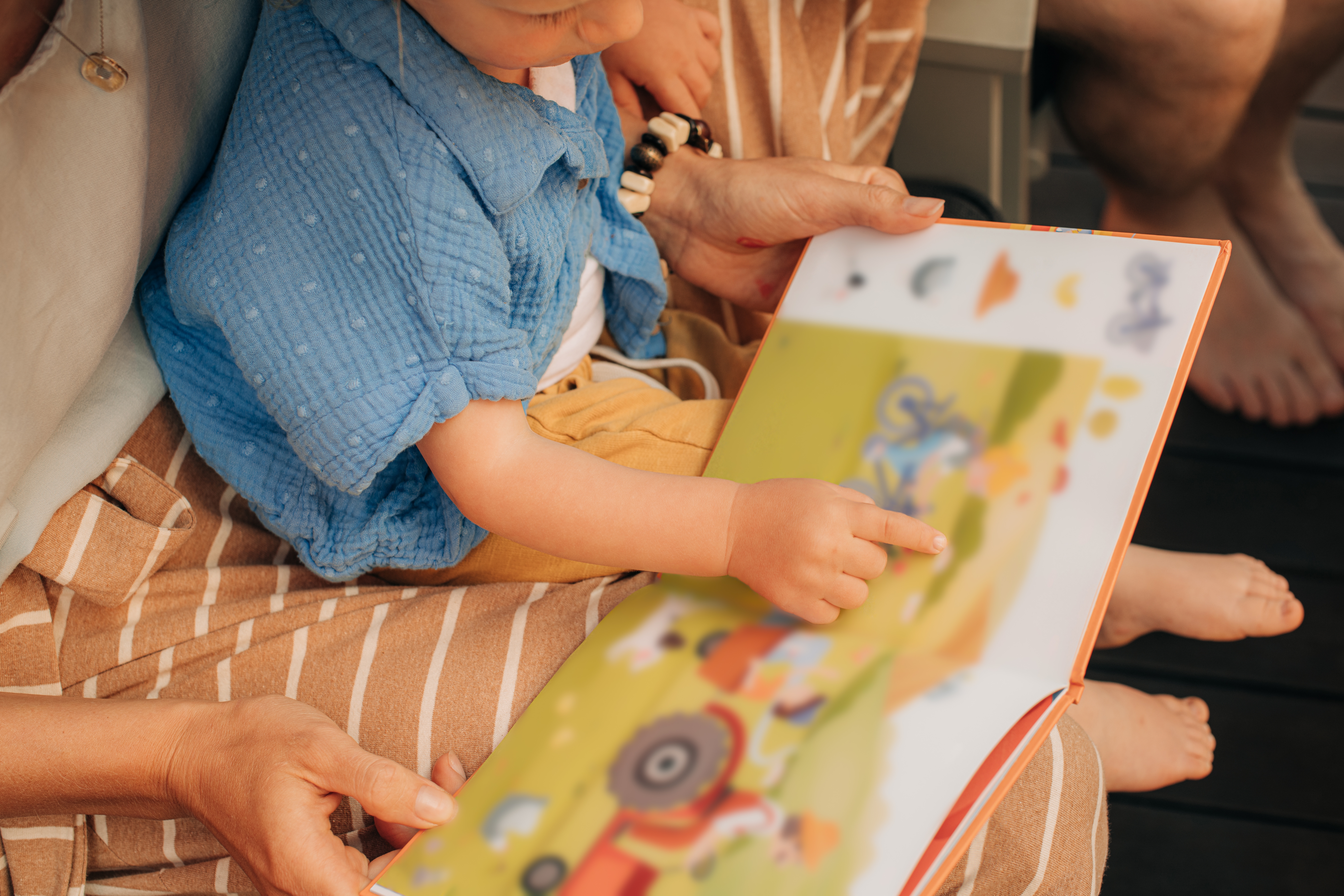As parents, we often wonder when the “right” time is to introduce our babies to books. The answer? Right away! Even newborns benefit from exposure to books, and research shows that early literacy experiences lay the foundation for language development, cognitive growth, and even emotional bonding.
The Benefits of Introducing Books Early
Babies are like little sponges, absorbing everything around them. When we read to them, we are doing so much more than simply entertaining them; we are helping them develop essential skills that will serve them for a lifetime.
- Boosts Language Development – Hearing words spoken aloud helps babies begin recognizing sounds, patterns, and rhythms in speech, forming the building blocks for future communication.
- Strengthens Parent-Child Bonding – Snuggling up with a book creates a comforting routine that builds a sense of security and love between parent and child.
- Encourages Cognitive Development – Books introduce babies to new concepts, from shapes and colors to cause-and-effect relationships, stimulating their growing brains.
- Develops Focus and Attention Span – Even though babies may not sit still for long, brief, repeated exposure to books strengthens their ability to focus and engage.

The Best Types of Books for Babies Under One
Not all books are created equal when it comes to newborns and infants. Here are some ideal choices for little learners:
1. Black and White Books
Newborns’ vision is still developing, and they see high-contrast colors best in the early months. Black and white books with bold patterns and simple illustrations help stimulate their visual development and keep them engaged. Some great choices include:
2. Touch-and-Feel Books
Babies learn through touch, so books with different textures encourage sensory exploration and fine motor skills. These books help babies connect words with tangible experiences, making reading even more engaging. Try:
- Pat the Bunny by Dorothy Kunhardt
- That’s Not My Puppy by Fiona Watt
- Never Touch a Porcupine! by Rosie Greening
3. Cloth and Soft Books
Perfect for teething babies who love to put everything in their mouths, soft fabric books are safe, durable, and often feature crinkly pages that provide an extra sensory experience. Popular picks include:
4. Board Books
Sturdy pages make board books a great option for little hands that love to grab, pull, and explore. These books can withstand chewing and rough handling while introducing babies to simple words, shapes, and pictures. Some must-haves are:
- Brown Bear, Brown Bear, What Do You See? by Bill Martin Jr. & Eric Carle
- Where Is Baby’s Belly Button? by Karen Katz
- Goodnight Moon by Margaret Wise Brown
5. Lift-the-Flap Books
Interactive elements like flaps encourage curiosity and make reading even more exciting for babies. These books build fine motor skills and make learning playful:
Making Reading a Part of Everyday Life
Incorporating books into your baby’s daily routine doesn’t have to be complicated. Here are some easy ways to make it a habit:
- Start with just a few minutes a day. Even if your baby seems uninterested, continue introducing books in short bursts.
- Follow their lead. Let them explore books in their own way, whether that means chewing, flipping pages, or just looking.
- Make it fun! Use silly voices, facial expressions, and sound effects to bring stories to life.
- Repeat favorites often. Babies love repetition—it helps with learning and makes them feel secure.
Final Thoughts
It’s never too early to start reading to your baby! By introducing books from the very beginning, you’re nurturing their brain development, strengthening your bond, and laying the foundation for a lifelong love of learning. So grab a book, snuggle up, and enjoy these special moments—your little one is born to read!

